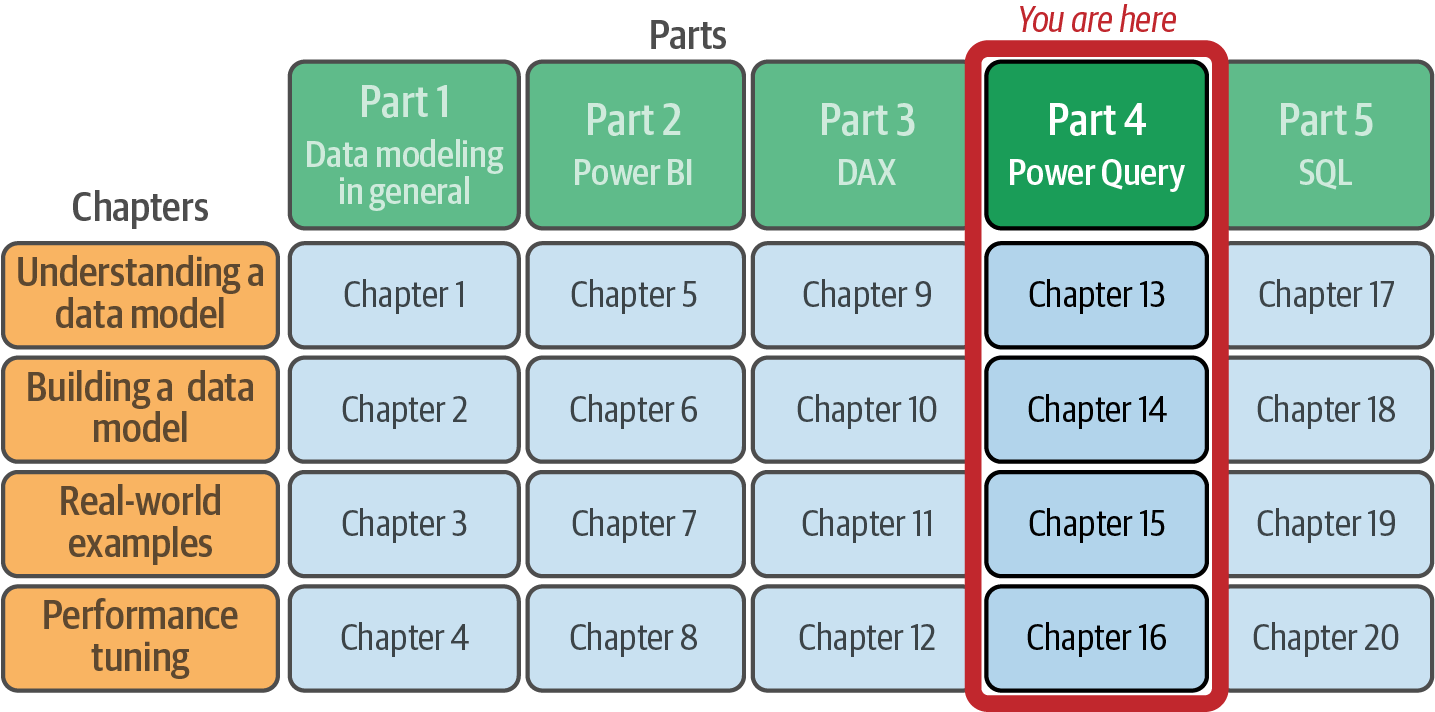Part IV. Data Modeling for Power BI with the Help of Power Query
This part of the book is all about Power Query. Power Query’s purpose is to bring the information available in any data source into the right shape. Even when the data is already in the correct shape, it runs “through” Power Query. You will come very far by clicking the correct buttons in Power Query’s user interface. Every transformation you are applying to the data is “recorded” as a step in a Power Query query, written in the M language. Only in more advanced cases, though, will you need to lay your hands on such a script.
This part starts with an overview about the basic terms and concepts (in Chapter 13):
-
Tables and queries
-
Merging columns to form a primary key
-
Creating a surrogate key
-
Combining queries
Chapter 14 will show you the steps you’ll probably need to apply to all your data sources:
-
Normalizing and denormalizing
-
Adding calculations
-
Transforming flags and indicators into meaningful text
-
Adding a date or time table
-
Duplicating dimension tables per role
-
Treating slowly changing dimensions
-
Flattening parent-child hierarchies
This part teaches you how to solve the real-world examples introduced in Chapter 3 with the help of Power Query (Chapter 15):
-
Binning
-
Multi-fact data models
-
Multi-language data models
-
Key-value pair tables
Power Query has some interesting features ...
Get Data Modeling with Microsoft Power BI now with the O’Reilly learning platform.
O’Reilly members experience books, live events, courses curated by job role, and more from O’Reilly and nearly 200 top publishers.


